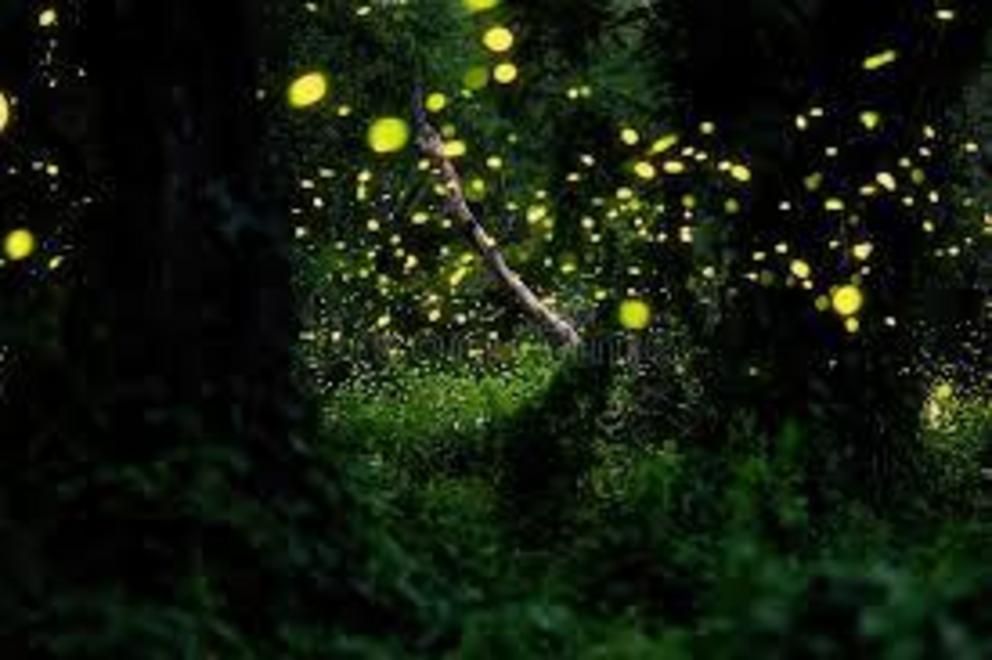Fireflies love to synchronise their flashing lights. Now, we finally know how
Every year, for just two short weeks in June, the forests in the southeast US host an incredible phenomenon. Swarms of thousands of male fireflies take wing into the twilight, their abdomens brilliantly flashing in a breathtaking, synchronised mating display.
It's as mysterious as it is beautiful. For at least centuries, humans across the world have wondered how these beetles coordinate their dance of light. Explanations have ranged from the wind exposing the glowing abdomens, to sheer coincidence. One notable letter-writer to Science in 1917 even proposed that it was an illusion generated by the viewer's own blinking.
Research since then has shown that the synchronisation is, in fact, real. And mathematical models have shown how synchrony in firefly flashes develops over time. But the mechanism whereby that synchronisation occurred remained elusive.
"Is it something hardwired in fireflies that makes them want to synchronise?" said physicist Raphaël Sarfati of the University of Colorado Boulder. "Or is it something more context dependent, maybe based on their environment?"
Now, a new study led by Sarfarti has added the missing ingredient: three-dimensional space.
After taking stereoscopic video of firefly swarms (Photinus carolinus) in the Great Smoky Mountains National Park in Tennessee, the research team reconstructed the flashing in three-dimensional space. And they found that there isn't some strange innate firefly rhythm; rather, the fireflies synchronise by copying the fireflies around them.
The data collection took place in June of last year. Sarfati and his colleagues went out to the national park, set up tents and two 360-degree cameras.
They recorded as much of the mating display as they could. For around 90 minutes a day, starting half an hour after sunset, they recorded as the fireflies started to glow, then flash in a repeated pattern: a few short flickers in a cluster, followed by a pause of a few seconds, followed by more flickering. As the fireflies synchronise, the light seems to ripple across the terrain in waves.
The team also observed that the swarm stayed within about two metres of the ground, and the shape of the swarm closely followed the shape of the terrain - all the better to keep in view of the females that stay closer to the ground.
When the team isolated individual bugs in the tents, things got interesting. They lost all sense of the rhythm occurring outside. They'd flicker sporadically, completely out of sync with the main swarm. Things got even more interesting when small numbers of fireflies were added to the tent. With up to about 15 fireflies, the flashing was still erratic. But at higher numbers, they started to pulse together again.
"When you start putting 20 fireflies together, that's when you start observing what you see in the wild," Sarfati said. "You've got regular bursts of flashes, and they're all synchronised."
This suggests, the team said, that the synchrony is social. The fireflies see what the other fireflies in their immediate proximity are doing, and respond in kind - resulting in a ripple of light, a bit like a stadium wave.
As for the why, that's still a mystery. There's one theory that synchrony developed because the intervals of darkness allow the males to find the fainter flash of the female beetles as they respond to the display - a sort of luminous call and response.
The mathematical modelling that emerges from this research will be a valuable tool for studying the flash patterns of other firefly species. Working out how it occurs, and why it evolved, could also help us understand other instances of synchrony in nature.
"This kind of synchrony occurs in many natural systems," said physicist Orit Peleg of CU Boulder. "The cells in our hearts all flex and contract at the same time. Neurons in our brains also synchronise."
There may be practical applications, too. Synchronisation is vital to many technologies, such as radio communications, GPS and parallel computing. A growing field is swarm robotics, where a swarm of small robots can be synchronised to work together like insects to perform a task.
And knowing just a little bit more about these seemingly magical creatures might help to protect them, too.
"So many people have had positive experiences with fireflies," said Sarfati.
"They're also very fragile. Many species are on the decline around the world because there is more and more light pollution."
The research has been published in the Journal of the Royal Society Interface.

